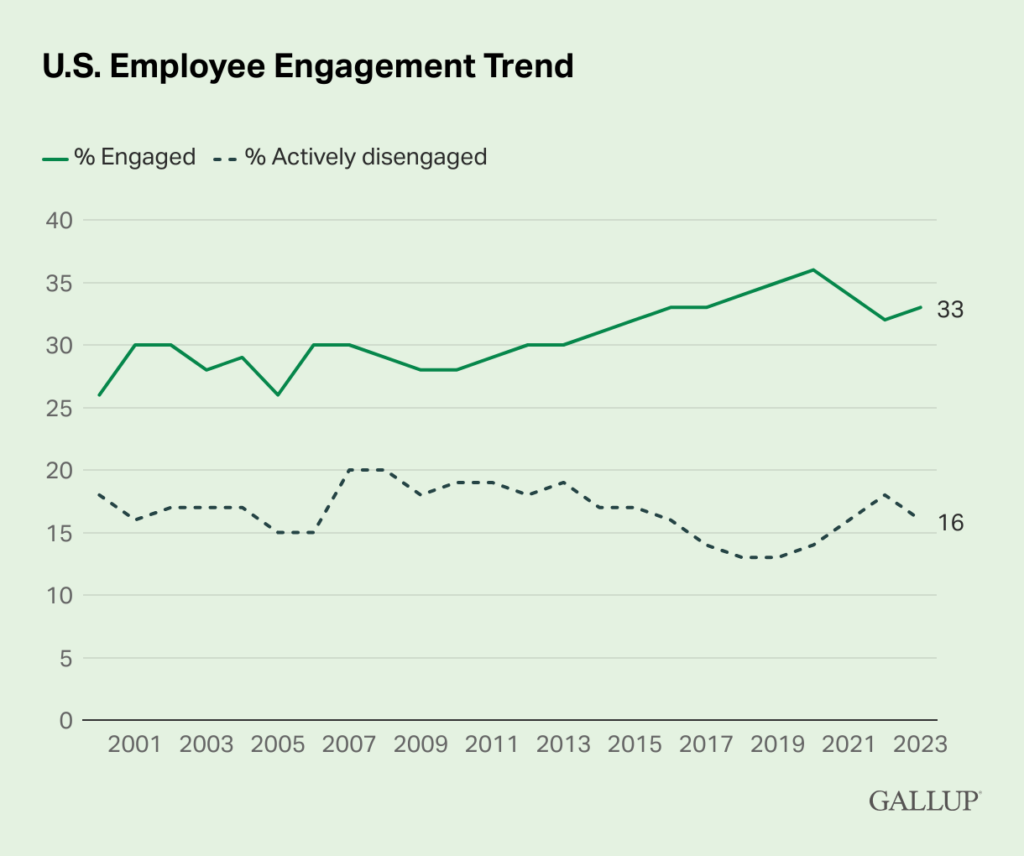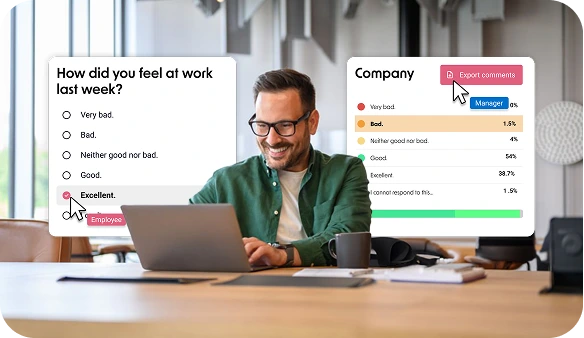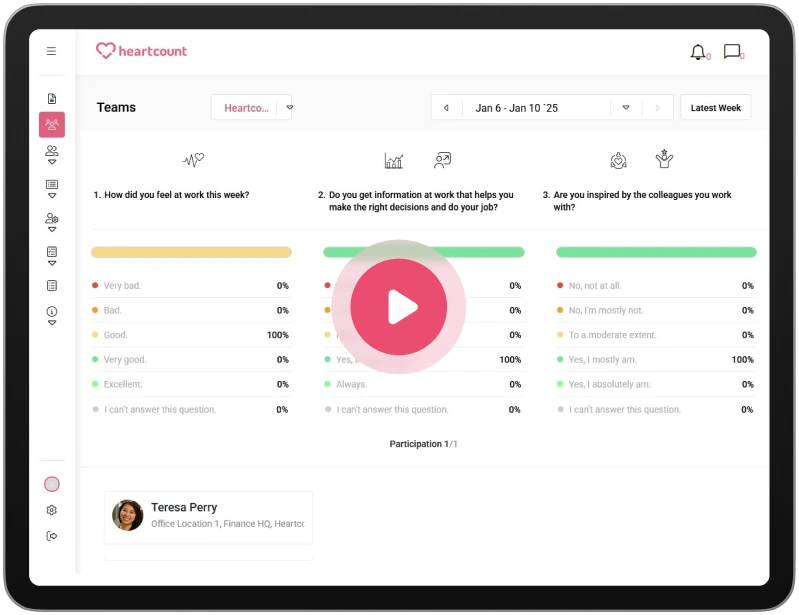Employee relations: What you need to know for a healthy workplace

Harmonious employee relations are crucial for any successful organization. Poor communication and conflicts in the workplace can lower morale, harm company culture, and impact productivity.
By addressing employee issues promptly, you can create a healthy work environment that improves engagement and supports long-term success.
Harmonious employee relations are crucial for any successful organization. Poor communication and conflicts in the workplace can lower morale, harm company culture, and impact productivity.
By addressing employee issues promptly, you can create a healthy work environment that improves engagement and supports long-term success.
What are employee relations?
Employee relations encompass managing the relationship between employers and employees, addressing common workplace issues like conduct, safety, and resource management to build a healthy, productive environment.
- Workplace conflict resolution: This means resolving disputes between employees or with management. It helps maintain a harmonious work environment.
- Wage issues: Fair pay and benefits are crucial here. It’s important to address concerns about salaries and bonuses to ensure that employees feel appropriately rewarded for their work.
- Health and safety: Workplace safety and health protocols are key aspects. They are designed to protect employees and prevent accidents.
- Employee morale: Creating a positive workplace culture involves recognizing and addressing factors that affect job satisfaction while also implementing initiatives that boost motivation and engagement.
It’s about creating a supportive space where employees feel valued and heard.
Horizontal and vertical employee relations
Positive employee relationships among colleagues are essential for fostering teamwork and respect. Vertical relationships ensure that employees’ voices are heard by management, aligning their goals with company policy and improving employee conduct. The employee relations team, equipped with the right employee resources, plays a pivotal role in managing these dynamics.
- Horizontal (peer-to-peer) relationships: Involve interactions between employees at the same level. Encouraging positive relationships boosts teamwork and respect among colleagues, which can greatly improve workplace morale.
- Vertical (employee-to-management) relationships: These are interactions between employees and their managers. Effective vertical relationships require trust, respect, and open communication. They align employee goals with those of the organization, ensuring a smooth workflow and high productivity.
Both types are essential for fostering a cohesive and productive workplace.
Why are employee relations important?
Good employee relations practices not only improve performance and retention but also play a crucial role in successful collective bargaining, contributing to a harmonious workplace. Incorporating work-life balance into your employee relations strategy can significantly enhance satisfaction and productivity.
As Anne M. Mulcahy, former CEO of Xerox, says: “Employees who believe that management is concerned about them as a whole person—not just an employee—are more productive, more satisfied, more fulfilled. Satisfied employees mean satisfied customers, which leads to profitability.”
A Gallup study found that companies with engaged employees are 21% more profitable.
Good employee relations contribute to the following:
- Higher employee retention: Supported employees are more likely to stay. This reduces turnover and costs. SHRM found that 58% of employees would stay over three years if their employer handled employee relations well. A Harvard Business Review study found that firms with good employee relations have 25% less turnover.
- Increased job satisfaction: A good work environment boosts job satisfaction. When employees are treated well, they are motivated to perform their best. The APA reports that employees who feel valued are 60% more likely to be motivated to do their best.
- A positive, supportive company culture: You can enhance employee relations by fostering trust, respect, and collaboration.
You can build a more engaged, committed workforce by prioritizing employee relations. This will lead to success and growth.
Who is in charge of employee relations in the workplace?
The human resource department, particularly the employee relations division, is responsible for managing workplace dynamics, ensuring that the employer-employee relationship is strong and that company policies are consistently applied. An employee relations manager, supported by specialists, oversees these efforts, ensuring that employee concerns are addressed effectively. Their presence ensures a supportive work environment.
- HR directors: They oversee employee relations, aligning them with the organization’s goals. They create policies, procedures, and programs to improve employee relations. They work with HR and management to resolve employee issues and conflicts. They also foster a supportive work environment.
- Employee relations managers: These managers handle the day-to-day management of employee relations. They are responsible for implementing policies, addressing employee concerns, and resolving conflicts. They help ensure a positive, productive work environment. They do this by fostering open communication and providing support.
- HR managers: They work with employees and management on relations issues. They implement HR policies, conduct employee performance reviews, and provide guidance and support. They are vital in resolving conflicts and addressing concerns. They also ensure compliance with employment laws and regulations.
- Employee relations specialists: They manage and improve employee relations in the organization. They are skilled in:
- Conflict resolution: Mediating and resolving disputes between employees or management using effective communication and problem-solving techniques.
- Enhancing communication: Improve channels to ensure employees feel heard, valued, and informed. This prevents misunderstandings and fosters transparency and trust.
- Fostering a positive culture: Boosting morale, engagement, and job satisfaction. Creating a supportive, inclusive environment.
These roles work together to solve employee issues and support a healthy workplace.
Most common employee relations issues and how to handle them
Workplaces often have employee relations issues. It’s vital to address them quickly and maintain a healthy work environment. Here are common employee relations issues and ways to handle them:
Conflict between employees
Conflicts can arise between employees due to personality clashes, work styles, or misunderstandings. Addressing conflicts through effective communication and employee advocacy is key to maintaining a positive work environment. A study by CPP Global found that 85% of employees face conflict. Of these, 29% deal with it almost constantly. Also, unresolved conflict at work can cause 2.6 days of lost productivity per employee each year.
It’s crucial to address conflicts quickly and effectively. If left unresolved, they could worsen and harm the work environment, leading to lost productivity and employee dissatisfaction.
You can resolve conflicts between employees in a few ways:
- Mediation: Ease a mediation session where the conflicting parties can discuss their issues in a neutral setting. A trained mediator can help find a solution that works for both parties.
- Open communication: Encourage open and honest communication between employees. Create a safe space for employees to express concerns and resolve them.
- Conflict resolution training: Provide conflict resolution training to employees to equip them with the skills needed to address conflicts constructively. This can help employees see different views, communicate well, and find win-win solutions.
Wage disputes
Wage disputes can arise if employees feel underpaid for their work. A PayScale survey found that 65.8% of employees feel underpaid and are job hunting.
It’s vital to resolve wage disputes quickly and fairly. This maintains employee satisfaction and trust.
To resolve wage disputes, you can try:
- Transparent compensation policies: The HR department should ensure that compensation policies are clearly outlined in the employee handbook, helping to resolve wage disputes and maintaining a positive relationship between employers and employees.
- Regular reviews: Conduct regular salary reviews to ensure fair employee pay. Address discrepancies promptly. Then, give employees feedback on their performance and potential for salary increases.
- Open dialogue: Encourage open dialogue between employees and management regarding compensation. Create a platform for employees to voice concerns and get feedback on their pay.
Health and safety concerns
Addressing safety concerns and preventing workspace violence are critical components of a strong employee relations strategy. The National Safety Council says a worker is injured on the job every 7 seconds. This shows the need for proactive health and safety measures. OSHA says workplace injuries and illnesses cost businesses over $170 billion annually.
Promptly addressing health and safety concerns is vital. It prevents accidents and ensures compliance with safety regulations.
But how can you do that?
- Safety training: Provide regular safety training to employees to ensure they know safety procedures and protocols. This training can help prevent accidents and promote a culture of safety.
- Safety inspections: Regularly inspect the workplace for hazards and fix them. Address any safety concerns promptly and take corrective actions to prevent accidents.
- Open communication: Encourage employees to report any safety issues they see in the workplace. Create a culture where employees can voice concerns. They must know their safety is a priority.
Low morale
Low employee morale can hurt productivity, engagement, and company culture. A Gallup survey found that only 33% of U.S. employees feel engaged at work, with low morale contributing to disengagement.
Addressing low morale promptly is important for maintaining a positive work environment.
A few effective ways to boost employee morale include:
- Recognition programs: Use programs to reward employees for their hard work. Regularly recognizing employees’ achievements can boost morale and motivation.
- Team-building activities: Organize team-building activities to foster a sense of camaraderie and collaboration among employees. These activities can help build stronger relationships and create a positive work environment.
- Open communication: Encourage open communication between employees and management. Give regular feedback. Listen to employees’ concerns. Act on any issues that may hurt morale.
How to improve employee relations in the workplace
To improve employee relations, we must be proactive. You also have to create a positive, supportive work environment. Here are some strategies for enhancing employee relations in the workplace:
Better communication channels
Establishing clear communication channels, including feedback mechanisms and regular updates to the employee handbook, is essential for addressing employee concerns and aligning with company policy. According to a survey by Trade Press Services, 85% of employees say they’re most motivated when management offers regular updates on company news. Also, companies with good communication are 50% more likely to have lower turnover.
Clear, open communication between employees and management is vital. It builds trust and transparency. To achieve this:
- Hold regular meetings with employees: Discuss important matters, provide updates, and address concerns. These meetings provide an opportunity for open dialogue, keeping employees informed and engaged.
- Feedback mechanisms: Create ways for employees to share their thoughts, concerns, and suggestions. Regularly ask employees for feedback and act on any issues raised.
- Transparent communication: Ensure that communication from management is transparent and consistent. Clearly communicate company goals and policies. Update employees on changes. This keeps them aligned with the organization’s objectives.
With employee experience software like HeartCount, you can easily ask your employees to share their feelings and concerns through pulse check surveys.

Regular feedback and performance reviews
Regular feedback and performance reviews are key to good employee relations. Regular feedback helps employees see their strengths and weaknesses.
Performance reviews recognize achievements and set future goals.
Did you know that 78% of employees who receive regular recognition feel more motivated in their jobs? To enhance employee morale, consider:
- Timely feedback: Provide feedback quickly. Address both the positives and the areas for improvement in an employee’s performance. Timely feedback helps employees make necessary improvements and reinforces positive behaviours.
- Constructive feedback: Provide constructive feedback that focuses on specific behaviours and actions. Suggest ways to improve. Support employees in reaching their goals.
- Goal setting: Use performance reviews as an opportunity to set clear and achievable goals for employees. Work with employees to set goals that align with their career goals and the organization’s objectives.
Promote work-life balance
Encouraging a healthy work-life balance is crucial for employee well-being and job satisfaction. Employees with a good work-life balance are more engaged and productive. Also, 79% of employees think flexible work would boost their loyalty to their employer.
How could that be done? Simply!
- Flexible working arrangements: Offer flexible hours or remote work to meet employees’ needs.
- Encourage breaks: Urge employees to take regular breaks to recharge. This can improve focus and productivity.
- Workload management: Ensure that employees have manageable workloads and are not overburdened. This helps prevent burnout and promotes a healthy work environment.
Employee engagement strategies
Engagement strategies that include career development opportunities and employee advocacy programs can keep employees motivated and committed. Employee engagement strategies can improve relations and create a positive work environment:
- Professional development: Offer opportunities for professional development and career growth. Training, mentorship, and advancement can boost employees’ skills. They will be more engaged and motivated.
- Recognition and rewards: Create programs to recognize and reward employees’ hard work. Regularly recognizing and rewarding employees can boost morale and motivation.
- Work-life balance: Creating a positive employee experience is vital for fostering engagement and loyalty. Promoting work-life balance through supportive programs can greatly enhance overall well-being and productivity. To promote it, offer flexible work options, including remote work and flexible hours.
Employee relations strategy
A well-rounded employee relations strategy involves getting insight and addressing workplace issues through tools like HeartCount, proactive conflict management by the employee relations division, and consistent alignment with HR policies.
- Understanding employee relations issues: You can use tools like HeartCount to get insight into these issues, understand why they happen, and how to prevent them in the future. You can create surveys, peer recognition, and messaging management to reveal employee issues. In addition to regular (bi)weekly surveys, you can also create custom surveys, track peer recognition, gather direct messages to management, and more. You can also monitor these relationships in detail with the Semiannual Report.
- Proactive measures: Implement proactive measures to address employee relations issues before they escalate. Regularly reviewing and updating the employee handbook ensures that issues are addressed promptly, supporting strong employee relations.
- Employee relations programs: Create programs to foster a positive work environment. These programs can include wellness initiatives, diversity efforts, and employee support.
A strong employee relations strategy can create a supportive, productive work environment. It will foster good relationships and boost employee satisfaction.
With HeartCount, you can easily enable employees to share public recognition at any time. All recognitions are automatically logged in the employee record, granting valuable insights into team dynamics and relations over time.
Conclusion
Implementing effective employee relations practices, from fostering positive relationships to managing workplace issues, is essential for building a thriving and productive workplace.
You can create a productive work environment by:
- Understanding the importance of work relationships.
- Recognizing the roles that manage them.
- Addressing common issues.
- Implementing strategies to improve them.
Start a free trial with HeartCount to improve your employee relations and drive success!









